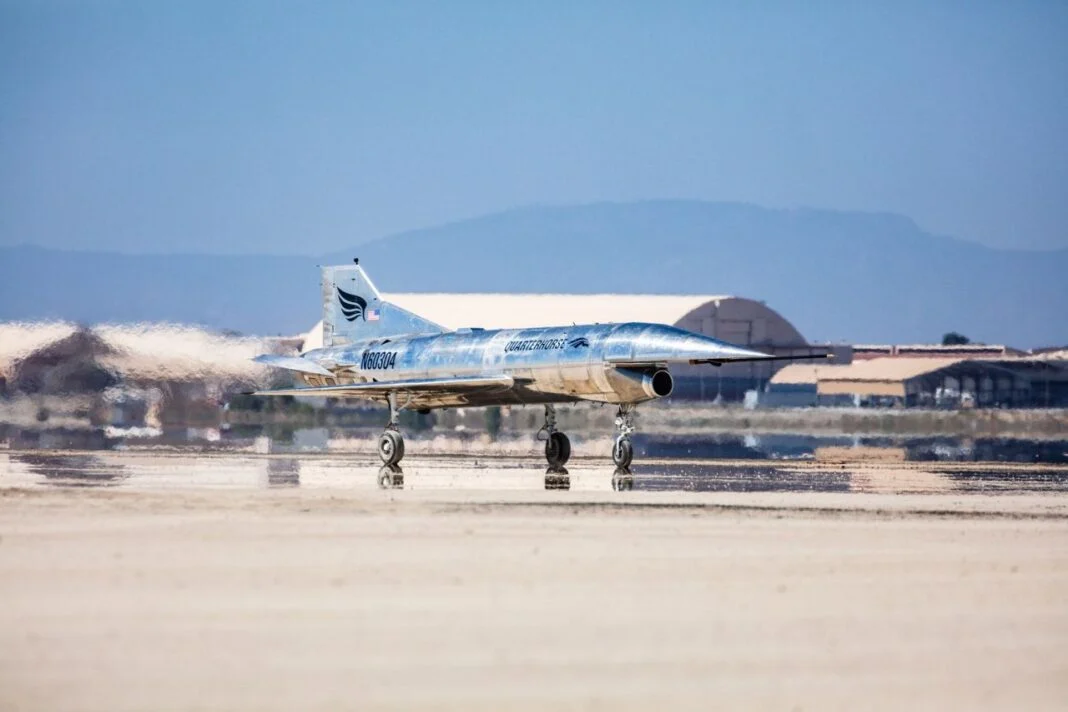
Hermeus, an aerospace startup focused on high-speed flight technologies, announced on Tuesday the successful first flight of its Quarterhorse Mk 1, an uncrewed demonstrator designed to pave the way toward operational hypersonic aircraft.
According to the company, the Mk 1 aircraft went from concept to flight in just over a year — a pace Hermeus says underscores its commitment to rapid iteration and development. “Mk 1 has redefined the pace of developing and flying new aircraft,” said Hermeus CEO and Co-Founder AJ Piplica. “We’ve proven the viability of our iterative development approach. But this is just the start.”
The aircraft took off and landed during a series of test flights aimed at validating basic flight performance of a high-speed uncrewed system. The company highlighted the unique challenge of takeoff and landing for aircraft designed around high-Mach flight, noting that this phase of testing was critical to inform future designs.
Quarterhorse Mk 1 is the first in a planned series of developmental prototypes under Hermeus’ “hardware-rich” approach — building full-scale aircraft on a rapid timeline to validate technologies and develop internal engineering talent. The company is targeting a “one aircraft per year” pace to accelerate progress toward hypersonic capability.
Data collected from the flight campaign confirmed performance expectations across a range of subsystems, including propulsion, power, thermal management, avionics, and control systems. “The real-world flight data from Mk 1 provides significant technical value that we’re rolling into our next aircraft,” said Co-Founder and President Skyler Shuford.
In a statement, Maj. Gen. Scott Cain, Commander of the Air Force Test Center, said, “Industry partnerships continue to have an important role in the development and test of disruptive and innovative capabilities for our warfighters. The promise of routine hypersonic flight is an exciting capability for the joint team.”
Hermeus’ next aircraft, Quarterhorse Mk 2, is already under construction in Atlanta. Roughly the size of an F-16, Mk 2 is designed to de-risk supersonic and high-Mach flight. It is scheduled to fly before the end of the year, with potential applications in future defense testing and operational roles.